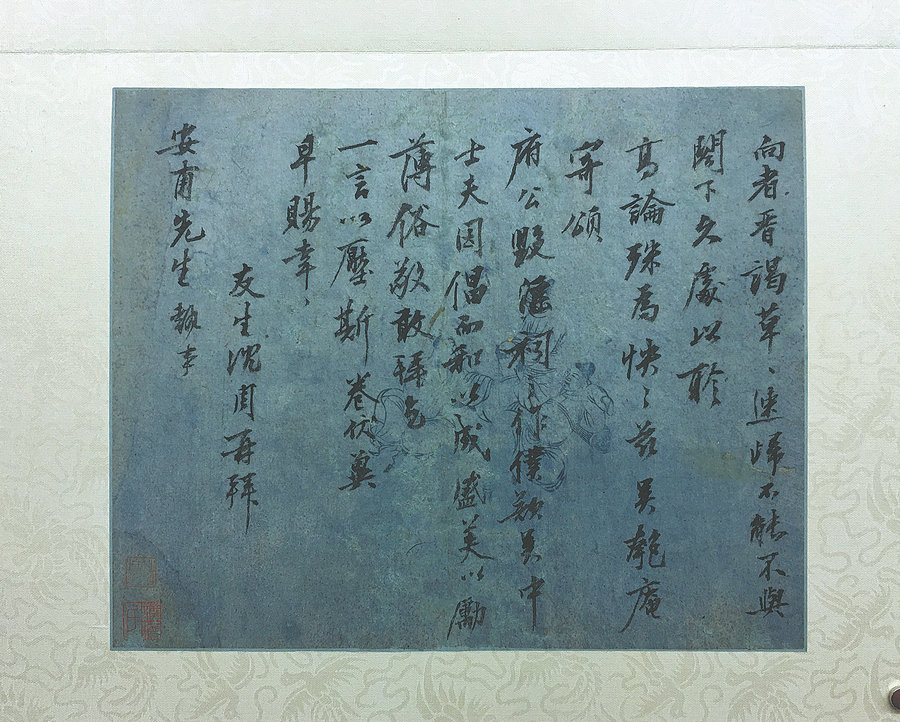

At a recent exhibition in Shanghai Library, a variety of paper types that Fei has replicated over the past 10 years were exhibited. These included tanjian, a well-known type of ancient paper invented by a man surnamed Tan during the Ming era. The paper is said to have been a favorite of Dong Qichang, a Ming Dynasty painter and calligrapher.
After recreating a type of paper, Fei often invites calligraphers and painters to try it, so they can tell him if the result is successful.
"How calligraphers and painters feel about paper is vital," Fei says.
Cai Yi, a calligrapher who has worked with Fei for years, says Fei often works in an exemplary way and has his own understanding of making paper.
"One cannot work in the field of restoring ancient paintings and calligraphy works without such an attitude," Cai says.
Fei says, "Restoring and mounting ancient paintings is a labor of love. One must have a true love for the ancient work and respect for the techniques that have been passed down from ancient times to be able to do a good job."
Many of the major differences between the various mounting techniques have disappeared, and modern technology has been applied to the field. However, Fei says that while technology is very helpful, he remains cautious in its usage.
"Since we work on irreplaceable artifacts, we must be especially careful, for fear that some experimental methods may damage them."
He has some apprentices now, and hopes they will inherit the craft and develop good techniques of their own. He also works as a consultant for some institutes responsible for restoring ancient paintings. Compared to the time when he learned the techniques from Yan, it seems that, now, students of the subject spend a lot of time learning theory at school, but get little hands-on experience, he says.
He would like to see higher education institutions improve their teaching so that students are equipped with vital skills, and do not just graduate with a diploma in hand, he says.